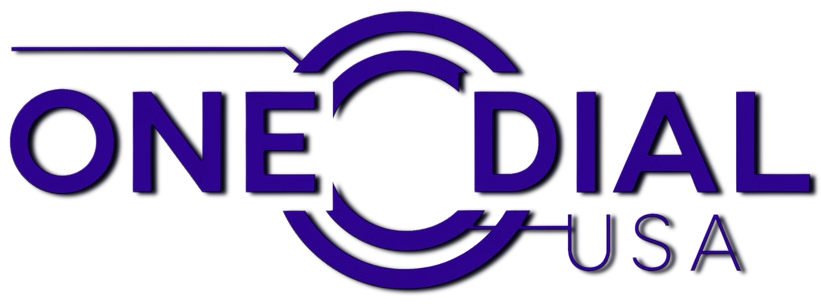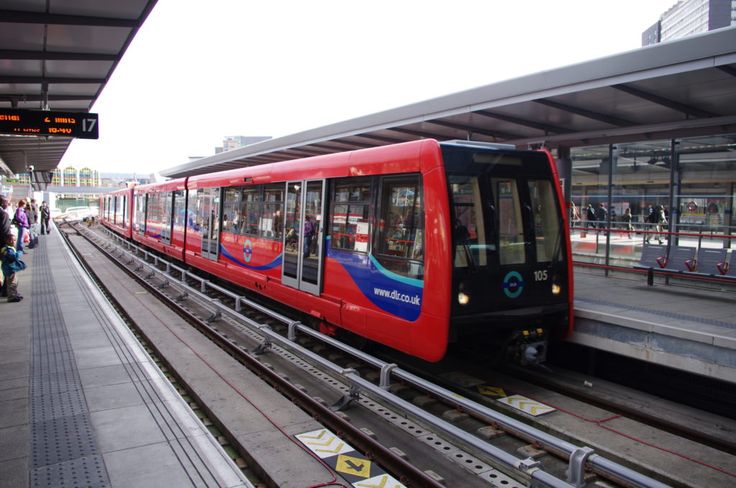- Admin
- Apr 08, 2025
- Government & Public Services
Highly Rated Public Transport in Seattle
Best OF Top 10 Public Transport in Seattle
Seattle, a bustling metropolis nestled along the Pacific Northwest coast, is known for its vibrant culture, diverse population, and extensive public transport system. Whether you're commuting to work, exploring the city's iconic landmarks, or attending community events, Seattle offers a range of Public Transportation Services Seattle designed to cater to the needs of residents and visitors alike. The city's commitment to sustainable and efficient transit systems reflects the values of Government Services Seattle, Public Sector Agencies Seattle, and Municipal Services Seattle, all of which strive to improve the quality of life for its citizens.
In this article, we'll explore the Top 10 Public Transport in Seattle, showcasing the city's most essential transportation services, from buses to ferries and light rail. Along the way, we will highlight how these services intersect with key government and civic initiatives such as Community Development Programs Seattle, Public Safety Services Seattle, and Urban Planning Organizations Seattle, ensuring a seamless and accessible transit experience for all.
Overview of Seattle's Public Transportation System
Seattle's Public Transportation Services Seattle include an integrated network of buses, trains, ferries, and light rail systems, providing comprehensive coverage throughout the city and surrounding areas. This interconnected system is a vital part of the city's infrastructure, overseen by Public Administration Services Seattle, and plays a crucial role in enhancing Public Health Services Seattle by reducing emissions, traffic congestion, and improving overall accessibility.
Why Public Transportation is Crucial for Seattle's Future
Public transportation in Seattle is more than just a convenience—it's a critical element of the city's commitment to environmental sustainability, accessibility, and economic growth. By integrating services like buses, light rail, ferries, and ride-sharing, the city is not only improving daily commutes but also addressing broader issues related to Public Safety Services Seattle, Emergency Response Services Seattle, and Public Health Services Seattle. These efforts, supported by Public Sector Agencies Seattle, contribute to the city’s long-term resilience and quality of life.
King County Metro Transit
King County Metro Transit is Seattle's primary bus service, providing routes across the city and into surrounding areas. With over 200 bus routes, Metro is an essential component of Emergency Response Services Seattle, ensuring that first responders can access critical areas during emergencies. Metro buses are fully integrated into Seattle's public transit system, providing a reliable and affordable option for commuters.
In addition to its comprehensive coverage, King County Metro works closely with Regulatory Agencies Seattle and Government Contracting Firms Seattle to ensure safety and efficiency. The buses are equipped with modern technologies such as real-time tracking and accessibility features for those with disabilities.
Sound Transit - Link Light Rail
Sound Transit operates the Link Light Rail, which connects Seattle with neighboring communities, providing an efficient and environmentally friendly alternative to driving. The Link Light Rail system is a crucial part of the city's Infrastructure Development Services Seattle, contributing to reduced traffic congestion and better air quality. The train system also works in tandem with Public Utility Companies Seattle to ensure that energy consumption is optimized and that environmental protection is prioritized.
The expansion of the Link Light Rail is also closely tied to Urban Planning Organizations Seattle, ensuring that the rail network aligns with long-term city growth and housing development goals. Its integration with other modes of transportation makes it a pivotal aspect of the city's future transit planning.
Seattle Ferry System
The Seattle Ferry System is one of the most iconic aspects of the city's public transport network. Offering both commuter services and leisure trips, the ferries connect downtown Seattle with nearby islands, such as Bainbridge Island and Vashon Island. Managed by Washington State Ferries, the system contributes to Environmental Protection Agencies Seattle by offering an alternative to long drives through traffic-heavy areas.
The ferry system plays a key role in Public Safety Services Seattle during emergencies, providing a vital means of transportation when other routes may be disrupted. Additionally, it helps reduce the carbon footprint of Seattle's transportation network through its energy-efficient design.
Seattle Streetcars
The Seattle Streetcar system is an exciting addition to the city's transportation infrastructure. With two lines running in different parts of the city, the streetcars are a convenient option for short trips within Seattle's core districts. They connect major business hubs, such as Capitol Hill and South Lake Union, and provide a critical link to Parks and Recreation Services Seattle by connecting residents and tourists to green spaces and public areas.
As part of Municipal Services Seattle, the streetcars provide sustainable transit options that complement Public Transportation Services Seattle, reducing traffic congestion and improving access to key neighborhoods.
Seattle Taxis and Ride-Sharing Services
For those who need flexible, on-demand transport, Seattle Taxis and Ride-Sharing Services like Uber and Lyft are available throughout the city. While not part of the public transit system, these services are a significant aspect of Seattle's overall transportation ecosystem. They complement Public Safety Services Seattle, offering safe and efficient transportation for both residents and visitors.
These services are also regulated by Regulatory Agencies Seattle, ensuring that they meet the necessary safety and operational standards.
Seattle Bike Share Program
Seattle is one of the many cities embracing sustainable transportation, and the Seattle Bike Share Program is a perfect example of this commitment. With over 1,000 bikes available for rent, the program offers a healthy and eco-friendly way to travel short distances. The program is closely tied to Urban Planning Organizations Seattle as it helps to reduce traffic congestion and promote healthier lifestyles.
In addition to its environmental benefits, the bike share program plays an important role in Community Development Programs Seattle by providing affordable transportation options to residents in lower-income neighborhoods.
Seattle Bus Rapid Transit (BRT)
The Seattle Bus Rapid Transit (BRT) system is designed to provide faster and more reliable bus service across key corridors in the city. By using dedicated lanes and efficient scheduling, BRT helps to ease congestion on Seattle's roads, contributing to Infrastructure Development Services Seattle. It is an essential part of Public Safety Services Seattle, ensuring that emergency vehicles can navigate the city effectively while reducing traffic delays.
RapidRide - King County Metro
RapidRide is a high-frequency bus service operated by King County Metro, offering fast, reliable, and frequent service to various neighborhoods in Seattle. With designated lanes and priority at traffic signals, RapidRide buses are designed to avoid congestion, making them one of the fastest modes of public transport in the city. The service connects commuters to vital locations, including business hubs, hospitals, and shopping districts.
Seattle Underground Tour and Transport Services
While primarily a tourist attraction, the Seattle Underground Tour and Transport Services is a unique way to explore the city's hidden history. The tours offer transportation through the historic underground pathways that once served as Seattle's original streets, providing visitors with a fascinating view of the city's past.
Seattle’s Future Transportation Initiatives
Seattle’s transportation network is constantly evolving. As the city grows, so does the need for more sustainable and efficient transport options. The expansion of the Link Light Rail, the introduction of Bus Rapid Transit (BRT) corridors, and the improvement of bike lanes are just a few of the forward-thinking initiatives led by Government Services Seattle to enhance public mobility. These initiatives are also part of Government Grant Services Seattle, ensuring that funding and resources are available to support continued infrastructure development.
FAQs
1. What is the customer service number for Seattle's public transport services?
You can contact King County Metro Transit customer service at (206) 553-3000 for information about bus schedules and routes.
2. Who founded the Seattle Ferry System?
The Washington State Ferries system was established in 1951 by the state of Washington to provide ferry service between Seattle and nearby islands.
3. How many employees work for Seattle's public transportation services?
The various public transportation services in Seattle employ thousands, with King County Metro alone employing over 3,000 people.
4. What is the average salary for a public transport worker in Seattle?
Salaries vary depending on the position, but bus drivers in Seattle earn an average salary of around $50,000 annually.
5. Where is the headquarters of Seattle’s public transportation system located?
The headquarters of King County Metro Transit is located at 201 S Jackson St, Seattle, WA 98104.
6. What are the major services provided by Seattle’s public transport system?
Seattle’s public transport services include buses, ferries, light rail, bike shares, streetcars, and taxis.
7. How is Seattle’s public transport system funded?
Seattle’s public transport system is funded through a combination of city taxes, state and federal grants, and fare collections.
8. What are the environmental benefits of Seattle's public transportation?
Public transportation in Seattle helps reduce traffic congestion, lower emissions, and promote energy efficiency, supporting Energy Conservation Programs Seattle.
9. Does Seattle’s public transportation provide service to outlying areas?
Yes, Seattle's Sound Transit and King County Metro offer routes that extend beyond the city limits to neighboring communities.
10. Are there any discounts available for Seattle’s public transport?
Yes, discounts are available for seniors, people with disabilities, and low-income residents through programs like ORCA LIFT.
11. How does Seattle's public transport contribute to community development?
Public transportation improves access to employment, education, healthcare, and recreational opportunities, supporting Community Development Programs Seattle.
12. Are there bike-sharing options available in Seattle?
Yes, the Seattle Bike Share Program provides over 1,000 bikes available for rent throughout the city.
13. How safe is Seattle's public transportation?
Seattle's public transport system is considered safe, with ongoing safety initiatives managed by Public Safety Services Seattle.
14. What are the benefits of the Link Light Rail system?
The Link Light Rail reduces traffic congestion, lowers emissions, and provides an efficient means of commuting across the region.
15. How are Seattle's public transport services regulated?
Public transport services in Seattle are regulated by Regulatory Agencies Seattle, ensuring they meet safety and operational standards.
16. Can Seattle's public transport accommodate people with disabilities?
Yes, Seattle's public transportation services are fully accessible, with ramps, low floors, and priority seating.
17. Are there any future expansion plans for public transport in Seattle?
Yes, Sound Transit is working on expanding the Link Light Rail and Bus Rapid Transit (BRT) systems to cover more areas in the city.
18. How are Seattle’s ferries environmentally friendly?
The Seattle Ferry System uses energy-efficient designs to reduce emissions and supports Environmental Protection Agencies Seattle.
19. Are Seattle’s public transportation services integrated with other city services?
Yes, Seattle’s public transportation services are part of the city’s broader urban planning initiatives, working in tandem with Public Works Departments Seattle and Urban Planning Organizations Seattle.
20. How can I apply for a job in Seattle’s public transportation system?
Job opportunities with King County Metro Transit and other transportation providers can be found on their official websites and public sector job board




Share on